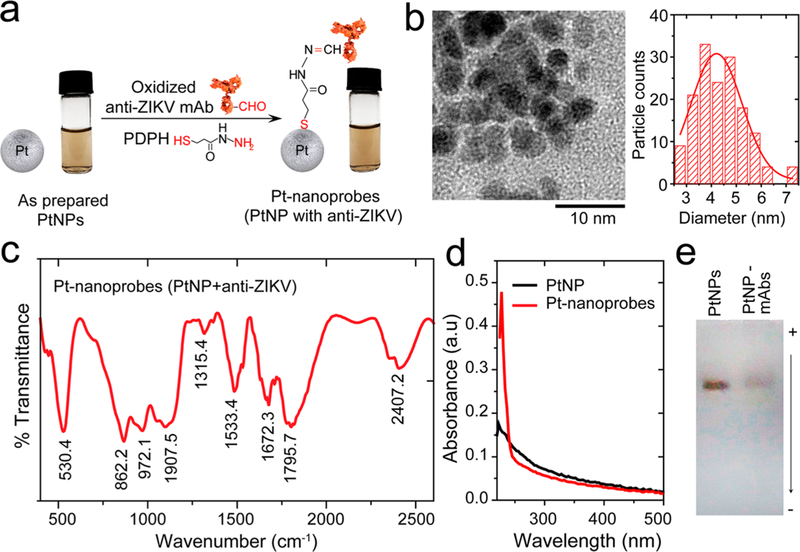Figure 2.
Pt-nanomotor preparation and characterization. (a) Schematic presentation of the protocol used in the preparation of Pt-nanomotors. Oxidized anti-ZIKV mAb was conjugated to the surface of PtNPs using a bifuctional cross-linker of 3-(2-pyridyldithio)propionyl hydrazide (PDPH) that has a terminal thiol group bound to the metal surface of PtNPs on one side and a terminal hydrazide group bound to the free aldehyde group in the oxidized carbohydrate residue of antibody on the other side. The images show no color change or visible turbidity in the PtNP samples, indicating the stability of the prepared Pt-nanomotors. (b) TEM micrograph and particle size distribution histogram of the prepared PtNPs. (c) FT-IR spectrum of the prepared Pt-nanomotors showing several characteristic peaks for protein at 1795.7 cm−1, 1672.3 cm−1, and 1533.4 cm−1. (d) UV–vis absorption spectra of PtNPs and the prepared Pt-nanomotors. A strong absorption peak at 260 nm was observed with Pt-nanomotors, confirming the conjugation of antibodies to the surface of PtNPs. (e) Agarose gel electrophoresis of PtNPs and PtNP-mAbs (Pt-nanomotors).

